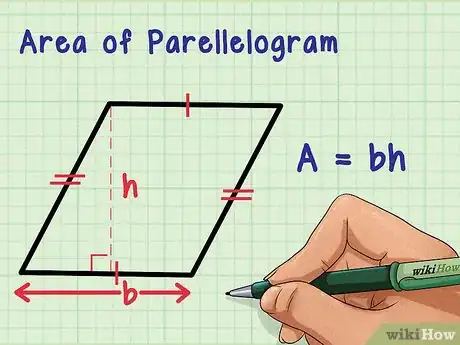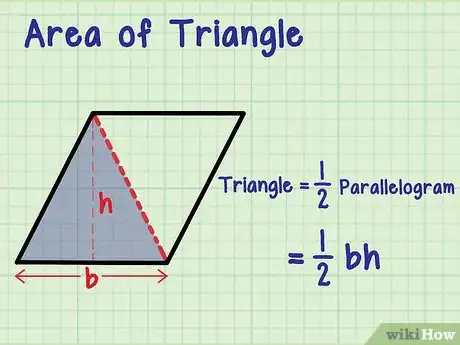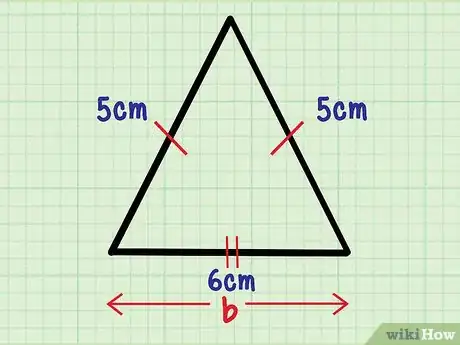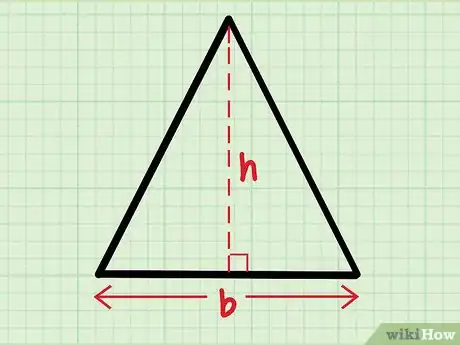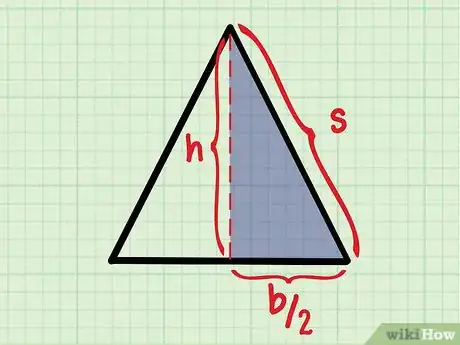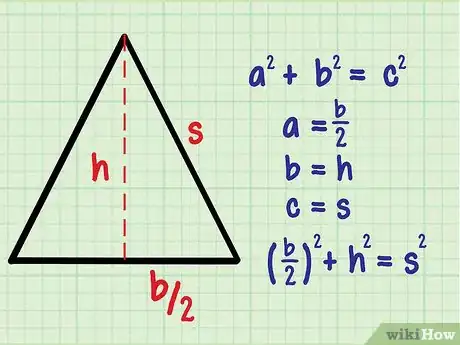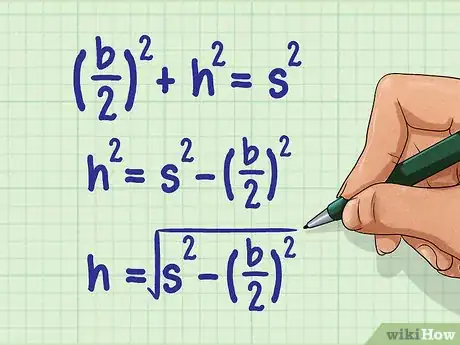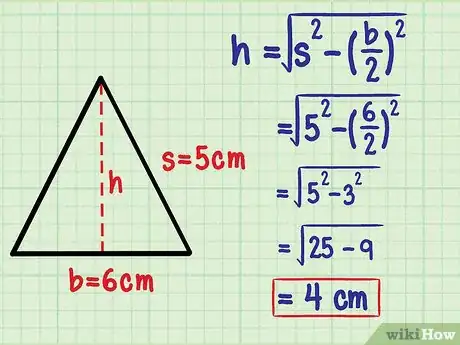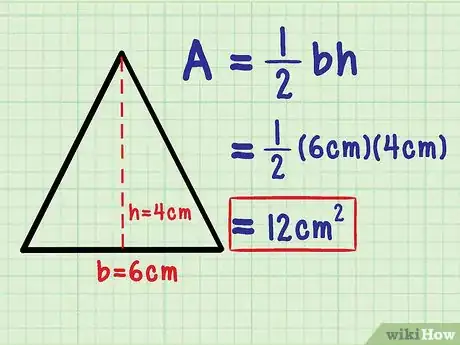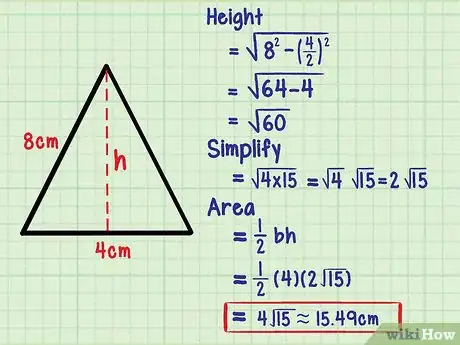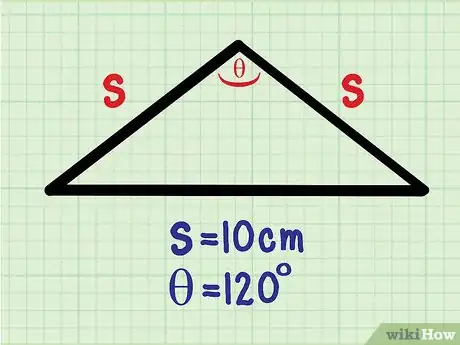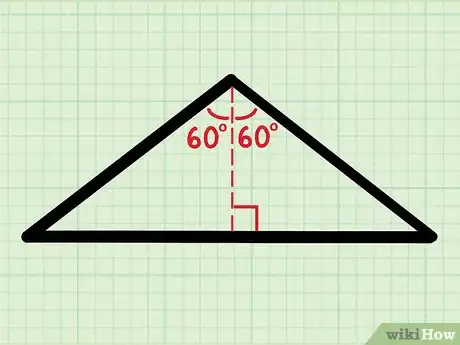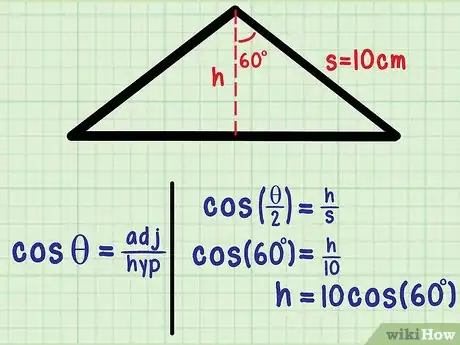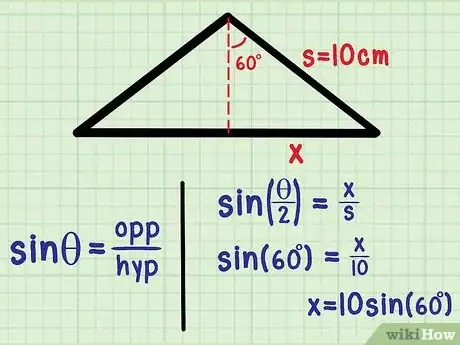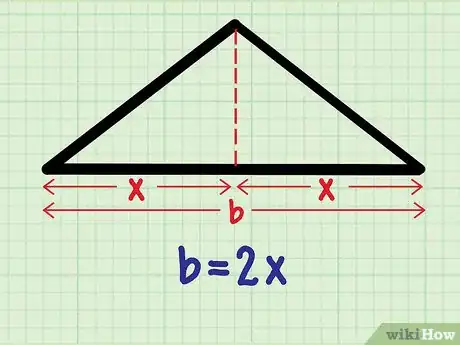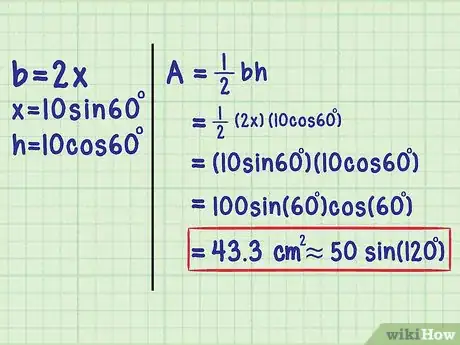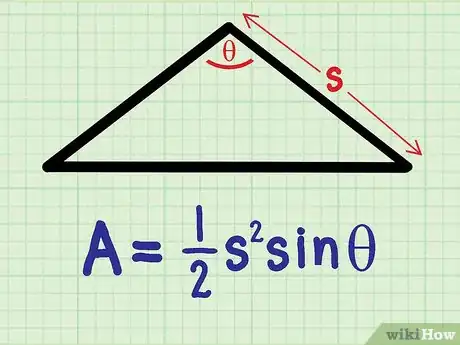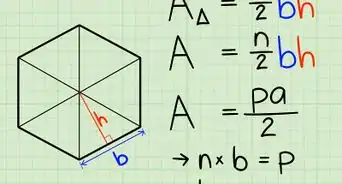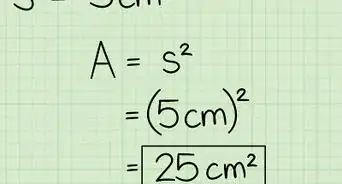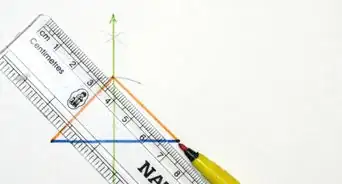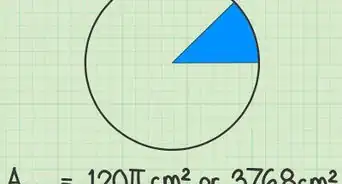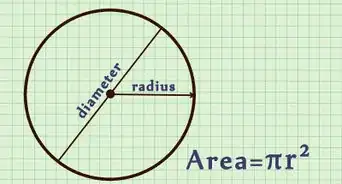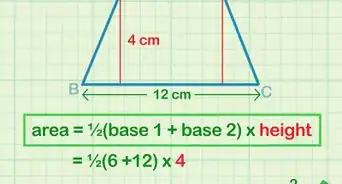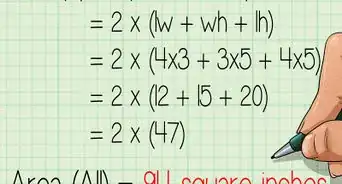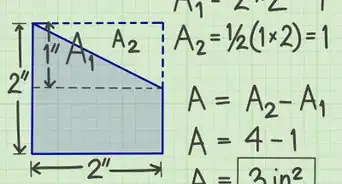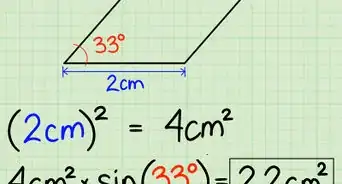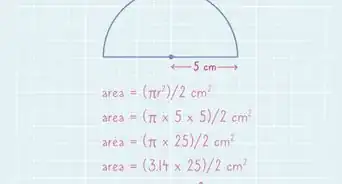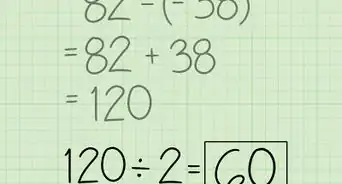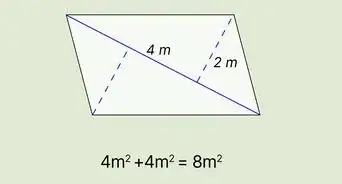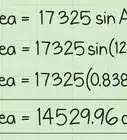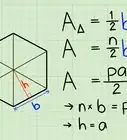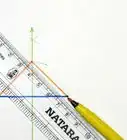This article was co-authored by David Jia. David Jia is an Academic Tutor and the Founder of LA Math Tutoring, a private tutoring company based in Los Angeles, California. With over 10 years of teaching experience, David works with students of all ages and grades in various subjects, as well as college admissions counseling and test preparation for the SAT, ACT, ISEE, and more. After attaining a perfect 800 math score and a 690 English score on the SAT, David was awarded the Dickinson Scholarship from the University of Miami, where he graduated with a Bachelor’s degree in Business Administration. Additionally, David has worked as an instructor for online videos for textbook companies such as Larson Texts, Big Ideas Learning, and Big Ideas Math.
There are 9 references cited in this article, which can be found at the bottom of the page.
This article has been viewed 659,040 times.
An isosceles triangle is a triangle with two sides of the same length. These two equal sides always join at the same angle to the base (the third side), and meet directly above the midpoint of the base.[1] You can test this yourself with a ruler and two pencils of equal length: if you try to tilt the triangle to one direction or the other, you cannot get the tips of the pencils to meet. These special properties of the isosceles triangle allow you to calculate the area from just a couple pieces of information.
Steps
Finding the Area from the Side Lengths
-
1Review the area of a parallelogram. Squares and rectangles are parallelograms, as is any four-sided shape with two sets of parallel sides. All parallelograms have a simple area formula: area equals base multiplied by the height, or A = bh.[2] If you place the parallelogram flat on a horizontal surface, the base is the length of the side it is standing on. The height (as you would expect) is how high it is off the ground: the distance from the base to the opposite side. Always measure the height at a right (90 degree) angle to the base.
- In squares and rectangles, the height is equal to the length of a vertical side, since these sides are at a right angle to the ground.
-
2Compare triangles and parallelograms. There's a simple relationship between these two shapes. Cut any parallelogram in half along the diagonal, and it splits into two equal triangles. Similarly, if you have two identical triangles, you can always tape them together to make a parallelogram. This means that the area of any triangle can be written as A = ½bh, exactly half the size of a corresponding parallelogram.[3]Advertisement
-
3Find the isosceles triangle's base. Now you have the formula, but what exactly do "base" and "height" mean in an isosceles triangle? The base is the easy part: just use the third, unequal side of the isosceles.
- For example, if your isosceles triangle has sides of 5 centimeters, 5 cm, and 6 cm, use 6 cm as the base.
- If your triangle has three equal sides (equilateral), you can pick any one to be the base. An equilateral triangle is a special type of isosceles, but you can find its area the same way.[4]
-
4Draw a line between the base to the opposite vertex. Make sure the line hits the base at a right angle. The length of this line is the height of your triangle, so label it h. Once you calculate the value of h, you'll be able to find the area.
- In an isosceles triangle, this line will always hit the base at its exact midpoint.[5]
-
5Look at one half of your isosceles triangle. Notice that the height line divided your isosceles triangle into two identical right triangles. Look at one of them and identify the three sides:
- One of the short sides is equal to half the base: .
- The other short side is the height, h.
- The hypotenuse of the right triangle is one of the two equal sides of the isosceles. Let's call it s.
-
6Set up the Pythagorean Theorem. Any time you know two sides of a right triangle and want to find the third, you can use the Pythagorean theorem:[6] (side 1)2 + (side 2)2 = (hypotenuse)2 Substitute the variables we're using for this problem to get .[7]
- You probably learned the Pythagorean Theorem as . Writing it as "sides" and "hypotenuse" prevents confusion with your triangle's variables.
-
7Solve for h. Remember, the area formula uses b and h, but you don't know the value of h yet. Rearrange the formula to solve for h:[8]
-
.
-
-
8Plug in the values for your triangle to find h. Now that you know this formula, you can use it for any isosceles triangle where you know the sides. Just plug in the length of the base for b and the length of one of the equal sides for s, then calculate the value of h.
- For example, you have an isosceles triangle with sides 5 cm, 5 cm, and 6 cm. b = 6 and s = 5.
- Substitute these into your formula:
cm.
-
9Plug the base and height into your area formula. Now you have what you need to use the formula from the start of this section: Area = ½bh. Just plug the values you found for b and h into this formula and calculate the answer. Remember to write your answer in terms of square units.[9]
- To continue the example, the 5-5-6 triangle had a base of 6 cm and a height of 4 cm.
- A = ½bh
A = ½(6cm)(4cm)
A = 12cm2.
-
10Try a more difficult example. Most isosceles triangles are more difficult to work with than the last example. The height often contains a square root that doesn't simplify to an integer. If this happens, leave the height as a square root in simplest form. Here's an example:
- What is the area of a triangle with sides 8 cm, 8 cm, and 4 cm?
- Let the unequal side, 4 cm, be the base b.
- The height
- Simplify the square root by finding factors:
- Area
- Leave this answer as written, or enter it in a calculator to find a decimal estimate (about 15.49 square centimeters).
Using Trigonometry
-
1Start with a side and an angle. If you know some trigonometry, you can find the area of an isosceles triangle even if you don't know the length of one of its side. Here's an example problem where you only know the following:[10]
- The length s of the two equal sides is 10 cm.
- The angle θ between the two equal sides is 120 degrees.
-
2Divide the isosceles into two right triangles. Draw a line down from the vertex between the two equal sides, that hits the base at a right angle. You now have two equal right triangles.[11]
- This line divides θ perfectly in half. Each right triangle has an angle of ½θ, or in this case (½)(120) = 60 degrees.
-
3Use trigonometry to find the value of h. Now that you have a right triangle, you can use the trigonometric functions sine, cosine, and tangent. In the example problem, you know the hypotenuse, and you want to find the value of h, the side adjacent to the known angle. Use the fact that cosine = adjacent / hypotenuse to solve for h:[12]
- cos(θ/2) = h / s
- cos(60º) = h / 10
- h = 10cos(60º)
-
4Find the value of the remaining side. There is one remaining unknown side of the right triangle, which you can call x. Solve for this using the definition sine = opposite / hypotenuse:
- sin(θ/2) = x / s
- sin(60º) = x / 10
- x = 10sin(60º)
-
5Relate x to the base of the isosceles triangle. You can now "zoom out" to the main isosceles triangle. Its total base b is equal to 2x, since it was divided into two segments each with a length of x.
-
6Plug your values for h and b into the basic area formula. Now that you know the base and height, you can rely on the standard formula A = ½bh:
-
- You can enter this into a calculator (set to degrees), which gives you an answer of about 43.3 square centimeters. Alternatively, use properties of trigonometry to simplify it to A = 50sin(120º).
-
-
7Turn this into a universal formula. Now that you know how this is solved, you can rely on the general formula without going through the full process every time. Here's what you end up with if you repeat this process without using any specific values (and simplifying using properties of trigonometry):[13]
- s is the length of one of the two equal sides.
- θ is the angle between the two equal sides.
Community Q&A
-
QuestionHow can I find the side of an isosceles triangle when only the area and the length of equal sides are given?
 Community AnswerA=area, L=length of 1 equal side, b=base, θ=HALF of angle between 2 equal sides. Split the triangle in half down the middle. The middle line is h, the height. Analyze the left triangle, where L is the hypotenuse and the smallest angle is θ. The smallest side is b/2, and the last side is h. sinθ = (b/2) / L --> b/2 = Lsinθ. cosθ = h/L --> h = Lcosθ. A = (1/2)bh = (b/2)h = (Lsinθ)(Lcosθ)=(L^2)sinθcosθ. sin(2θ) = 2sinθcosθ (by trig identities) --> sinθcosθ = (1/2)sin(2θ). --> A = (L^2)sinθcosθ = (1/2)(L^2)sin(2θ). Because A and L are known, the above equation can be used to find sin(2θ). Arcsin of sin(2θ) gives 2θ, allowing you to find θ. Then, you can find b from the equation: b/2 = Lsinθ.
Community AnswerA=area, L=length of 1 equal side, b=base, θ=HALF of angle between 2 equal sides. Split the triangle in half down the middle. The middle line is h, the height. Analyze the left triangle, where L is the hypotenuse and the smallest angle is θ. The smallest side is b/2, and the last side is h. sinθ = (b/2) / L --> b/2 = Lsinθ. cosθ = h/L --> h = Lcosθ. A = (1/2)bh = (b/2)h = (Lsinθ)(Lcosθ)=(L^2)sinθcosθ. sin(2θ) = 2sinθcosθ (by trig identities) --> sinθcosθ = (1/2)sin(2θ). --> A = (L^2)sinθcosθ = (1/2)(L^2)sin(2θ). Because A and L are known, the above equation can be used to find sin(2θ). Arcsin of sin(2θ) gives 2θ, allowing you to find θ. Then, you can find b from the equation: b/2 = Lsinθ. -
QuestionHow can I show that a triangle is isoceles?
 Community AnswerCoordinate proof: Given the coordinates of the triangle's vertices, to prove that a triangle is isosceles plot the 3 points (optional). Use the distance formula to calculate the side length of each side of the triangle. If any two sides have equal side lengths, then the triangle is isosceles.
Community AnswerCoordinate proof: Given the coordinates of the triangle's vertices, to prove that a triangle is isosceles plot the 3 points (optional). Use the distance formula to calculate the side length of each side of the triangle. If any two sides have equal side lengths, then the triangle is isosceles. -
QuestionHow do I find the base of a triangle if there is no height and no area?
 Community AnswerYou don't. You must be given certain information: perimeter, other sides, area, or height.
Community AnswerYou don't. You must be given certain information: perimeter, other sides, area, or height.
References
- ↑ https://www.mathsisfun.com/definitions/isosceles-triangle.html
- ↑ https://www.khanacademy.org/math/cc-sixth-grade-math/x0267d782:cc-6th-plane-figures/cc-6th-parallelogram-area/a/area-of-parallelogram
- ↑ https://www.wyzant.com/resources/lessons/math/geometry/areas/parallelograms_and_triangles
- ↑ http://mathworld.wolfram.com/IsoscelesTriangle.html
- ↑ https://www.cuemath.com/measurement/area-of-an-isosceles-triangle/
- ↑ https://www.mathsisfun.com/pythagoras.html
- ↑ https://www.cuemath.com/measurement/area-of-an-isosceles-triangle/
- ↑ https://byjus.com/maths/area-of-isosceles-triangle/
- ↑ https://www.cuemath.com/measurement/area-of-an-isosceles-triangle/
About This Article
To find the area of an isosceles triangle using the lengths of the sides, label the lengths of each side, the base, and the height if it’s provided. Then, use the equation Area = ½ base times height to find the area. If the length of the height isn’t provided, divide the triangle into 2 right triangles, and use the pythagorean theorem to find the height. Once you have the value of the height, plug it into the area equation, and label your answer with the proper units. For more tips, like how to use trigonometry to find the area, keep reading!
